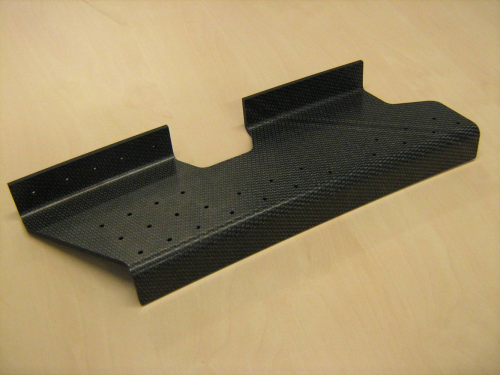
DTC converts semi-finished fabric and tape reinforced thermoplastics into finished parts. The company offers a wide range of materials, including PEEK, PEKK, PEI and PPS resins and carbon and glass fibre reinforcements.
Parts are press formed and CNC machined into intricate 3D components. DTC reports that with rapid tool change and very short cycle times (typically only a few minutes), press forming a reinforced thermoplastic is a highly cost competitive fabrication method for volumes ranging from only 5 pieces up to 10 000 or more as needed.
DTC has three press machines ranging from 60 to 200 tonnes, which can form parts ranging from a few centimetres in size up to 1 m. The company also has a 5 axis CNC machining centre. All fabrication processes are supported by in house CAD/CAM tooling design capabilities and inspection equipment, including CMM and NDI (C-scan).
On the DTC stand at The Composites Engineering Show in Birmingham on 9-10 November, there will be a selection of reinforced thermoplastic composite parts manufactured for aircraft interior and fuselage applications. These include system brackets, clips, seating parts, electronic casings, ribs, stringers and inspection hatches.
DTC has been supplying aircraft programmes for leading OEM aircraft manufactures such as Boeing and Airbus for over 10 years. It reports that small load carrying components in primary aero structures are increasingly being redesigned with a reinforced thermoplastic, typically replacing aluminium and titanium. “The CFRTP composite materials we offer are suitable for a wide range of structural applications where low weight is a critical design factor," says David Manten, Managing Director of DTC.
"In addition to the aerospace industry, we see many opportunities for other industries to redesign with a continuous fibre reinforced thermoplastic. These materials have low tooling costs and high productivity rates so are fabricated cost competitively. Being thermoplastics they are also easier to recycle.”



